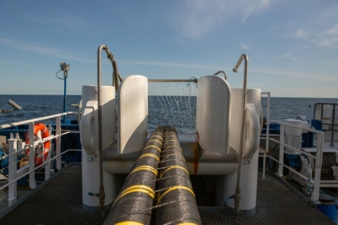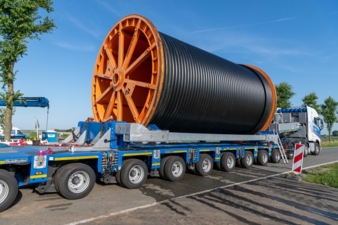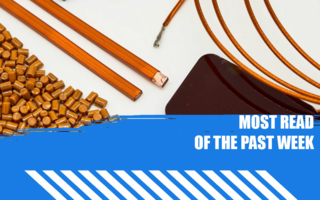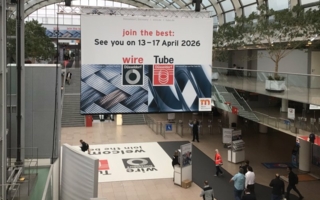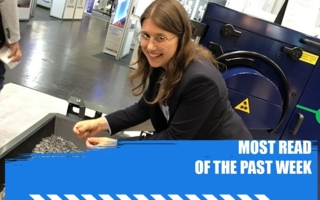12/04/2024 – Cable markets
Construction of electricity highways picks up pace
The energy transition is increasingly being viewed in European terms. This is because it must guarantee secure, cross-border generation of electricity from renewable energies. One successful example is the “NordLink” connection between Germany and Norway. And more will follow as the construction of electricity highways worldwide is picking up pace. Major orders await cable manufacturers.
At first glance, the 700km long “SuedLink” direct current line from northern to southern Germany is just a connection to transport the energy generated by wind power in the north to Bavaria and Baden-Württemberg. But, according to the German Federal Network Agency, it also facilitates – together with NordLink – integration into the European transmission grid. This means, for example, that hydropower from Scandinavia and the Alpine countries can be combined with German wind power and photovoltaics. The go-ahead for the construction of SuedLink has now been given, and the line is scheduled to come into operation in 2028.
Only proven quality
The 540km long, extra-high voltage ‘SuedOstLink’ line between Saxony-Anhalt and Bavaria also contributes to system stability in the German-European transmission grid. The EU has also identified this line, due to be completed in 2027, as a ‘project of common interest’. "This underlines the importance of new electricity highways such as ‘SuedLink’ and ‘SuedOstLink’ for the energy transition,” emphasises the German government. Production of the SuedOstLink HVDC cable system is ready to start, the cable manufacturer reports. Construction of the power line in Thuringia is set to begin in 2024.
Beforehand, the system had to meet the strictest test criteria under the international standards. During the four-month test program, the mechanical robustness and electrical performance of the cable system was investigated, along with the water resistance of its components. According to information from the cable manufacturer Prysmian, the P-laser cable technology it has developed is the first 100% recyclable, environmentally friendly, high-performance insulation technology based on HPTE (High Performance Thermoplastic Elastomers) "and reduces CO2 emissions from manufacturing by 30 percent". Conserving resources is also an important factor in production.
SuedLink – a German megaproject
With a length of 700km and an investment of ten billion euros, SuedLink is the largest infrastructure project in Germany's energy transition. It consists of two schemes with a total of four underground cables. They will connect Brunsbüttel and Wilster in Schleswig-Holstein with Großgartach in Heilbronn (Baden-Württemberg) and Bergrheinfeld/West in Schweinfurt (Bavaria). "The extra-high-voltage direct-current transmission employed enables low-loss power transport over long distances. From a purely arithmetical point of view, with its capacity of four gigawatts, SuedLink can supply ten million households," explains Tennet, the company responsible for the northern section of the SuedLink line. The southern section of the route lies within the area covered by TransnetBW.
SuedLink will have a transmission power of 4GW, with a cable length of 3,040km and a total voltage of 1,050kV. The conductor cross-section of the copper cables is 2,100mm², and the cables are 13.1cm in diameter. The cables are designed so that electric fields remain in the cables. Integrated optical fibres enable fault diagnosis and localisation. According to Tennet, a technical service life of 60 to 80 years is assumed for the underground cables. The cables are being made by two manufacturers in five production facilities. Eight cable logistics areas will be laid out along the course of the line, and 465 unwinding sites are planned around the route.
NordLink as a lighthouse project
NordLink has already been completed. This ‘green cable’ enables the exchange of German wind energy with Norwegian hydropower. "NordLink is a lighthouse project and an enormously important building block of the European energy transition, helping to compensate for periods when little renewable energy can be produced (‘dunkelflauten’), while simultaneously making green energy available reliably and affordably in the EU," Tennet explains. Due to the length of the line, direct current is used to transmit current through the two cables (positive and negative polarities) connected to converter stations at each end. "Direct current is especially suitable for long distances and high transmission capacities," emphasises Tennet. It has been calculated that NordLink can supply around 3.6 million German households.
However, NordLink is just one part of a future increase in the interconnection of power plants and power lines across Europe and worldwide. The goal is energy security even in the face of an uncertain geopolitical situation, and the expansion of renewable energies. "The more power plants that are connected to each other, the better and more reliably we can compensate for shortages or surpluses of electricity. That is why more and more cross-border connections are being built, and submarine cables are even being planned between continents,” explains Germany Trade & Invest (GTAI).
Major international projects
This is helping the Baltic states to accelerate their decoupling from the Russian electricity system. In the first phase, the domestic grid will be expanded; in the second phase, a direct-current connection between Lithuania and Poland will be established, accompanied by grid reinforcement in the two countries. A new direct, 330km long submarine cable to Poland is planned as a cross-border connection.
The Greek electricity grid is being expanded so that it can accept more electricity from renewable sources. Investments in the grid and in storage systems are being made to support this. Most of the funding is going towards connecting the Aegean islands and Crete to the continental electricity grid.
Intercontinental megaprojects are planned. Greece, Cyprus and Egypt are planning an electricity link between Africa and Europe, the EuroAfrica Interconnector. The 1,400km long submarine cable will supply green electricity to Europe. GTAI further reports that Greece and Bulgaria intend to establish a second link, approximately 150km in length.
Up to now, Morocco has been heavily dependent on energy imports. Now there are plans to turn things around: By 2040, it is intended that 70% of electricity should come from renewable sources – and this will require new cable connections. The plan to supply Europe with green electricity in the future is also coming to the fore. As part of this, Morocco is building a 1,500km² solar and wind farm. A Moroccan-British electricity project will supply the United Kingdom with clean energy from the solar and wind farms via two 1.8GW high-voltage direct-current (HVDC) submarine cables with a length of around 3,800km.
The operators' expectations of the manufacturers of cables and cable-making equipment are therefore enormous – and naturally the manufacturers will be glad to fulfil them.
Messe Düsseldorf GmbH
Messeplatz, Stockumer Kirchstrasse 61
40474 Düsseldorf/Germany
Tel.: +49 211 4560-01
info@messe-duesseldorf.de

